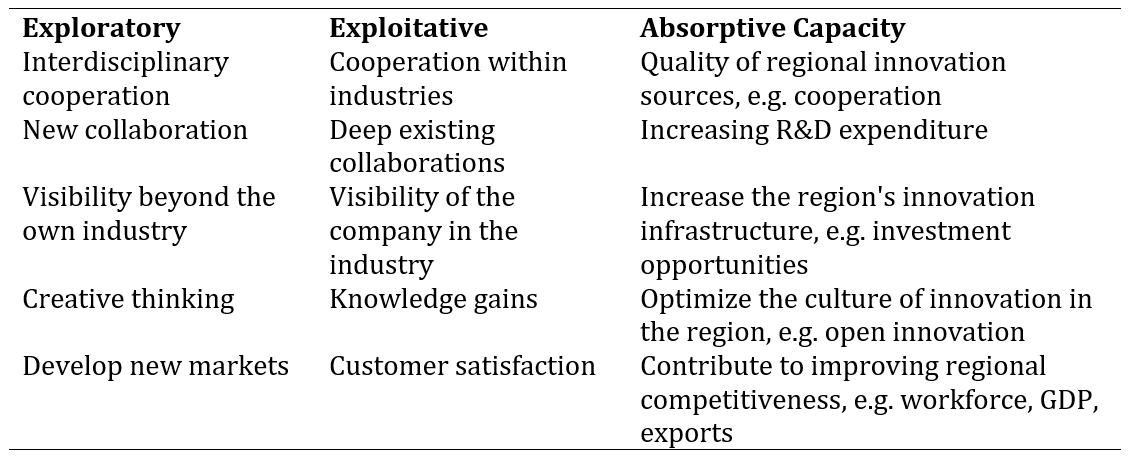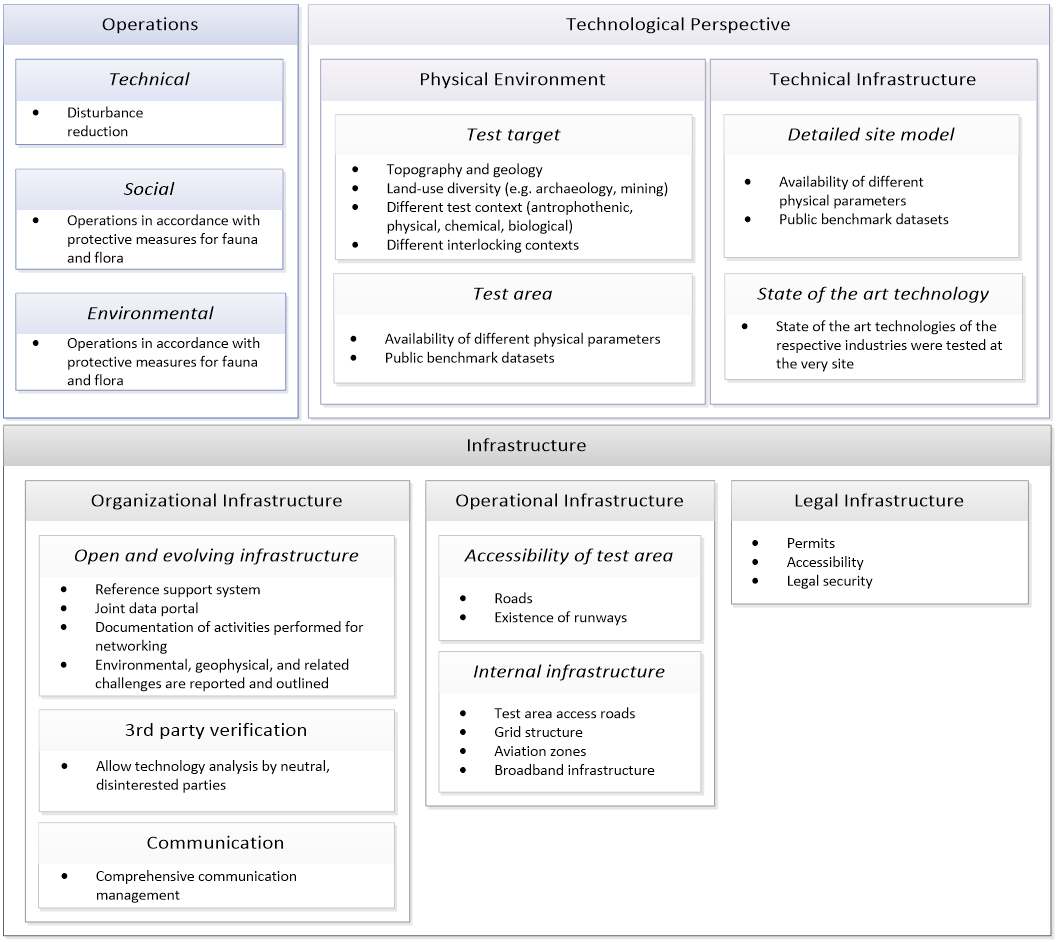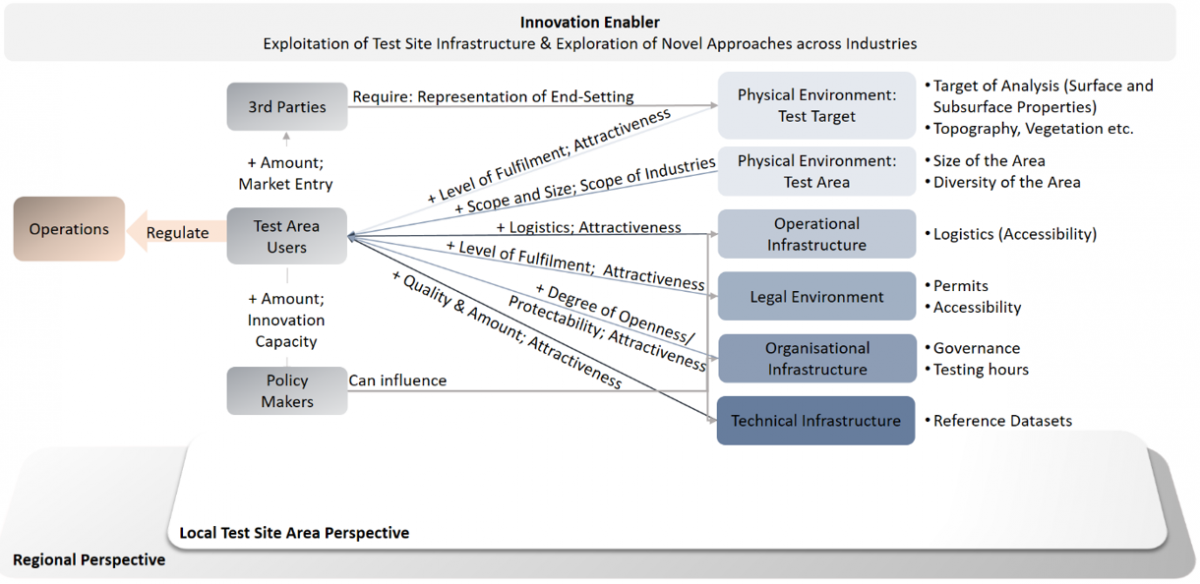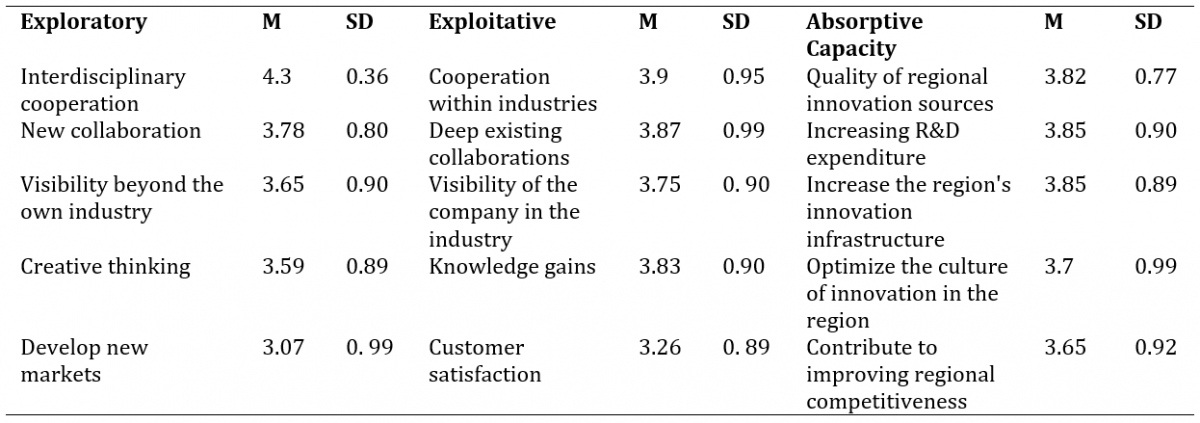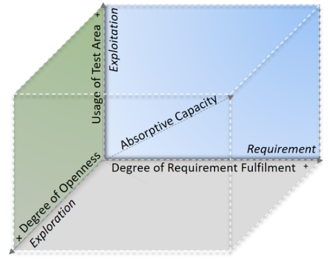AbstractTo stay ahead in innovation, look at horizontal industries and the ones leading your current industry, someone is always doing something new.
Jeff Butler
Keynote Speaker/ Scholar
Natural test sites are resource-intensive and often limited to single industries or technologies. Drawing upon two strands of research into technology development and innovation strategies, the research question in this paper investigates how converging test sites may provide opportunities for multiple industries and regions. The paper analyzes multi-industrial test sites regarding, (i) the requirements of the social and physical environment, logistic requirements, as well as technical requirements, (ii) the added value for technology developers, as well as, (iii) the absorptive capacity of the region. Qualitative and quantitative research designs were adopted to analyze multi-industrial test sites. The results indicate that the suitability of multi-industrial test sites depends on the market and research fit of the test target, the quality of the benchmark data, as well as logistical, organizational, legal, social, and ecological factors. The study shows that multi-industrial test sites increase and strengthen the absorptive capacity of regions. Additionally, the study discusses managerial and political implications of multi-industrial test sites. Until now corporate and public test site practices have received only scant recognition in technology management literature, a gap closed by this paper.
Introduction
Performance uncertainty and switching costs often hinder novel technologies, methods, and tools (Guerin, 2000). Regulatory, scientific, engineering, and investment communities require proof of concepts to overcome adaptation reticence (Kreijns et al., 2018). Test sites are physical places where public or private entities allow technology developers and their customers to access and perform technology tests. However, demonstrating the performance of technologies such as sensors comes with several requirements. Requirements include detailed knowledge of the test sites, testing, and land access permits, and compliance with socio-economic and ecologic conditions of the host country (Kesselring et al., 2020).
The literature on test sites and their development is scarce. Previous work has focused on technical specification, reports, and maintenance manuals. It appears that test site literature hardly includes new findings in innovation management or technology development. For example, scholars such as Zhao et al. (2018) report that pooling skills across industries can increase the understanding of technologies and decrease duplicate research. Contrary to these insights, most of the test sites today cater to single industries only. Examples supporting this statement include the Kauring test site for mineral exploration (Lane et al., 2009), the Järvselja test site for forestry applications (Kuusk et al., 2005), and the agricultural test sites in Groß-Umstadt (Borg & Fichtelmann, 2014). In addition, existing sites elaborate on the technical and economic potential of testing. Other emerging criteria such as social (for example, distance to residential networks or acceptability) or environmental (for example, distance from areas of environmental interest) have seen little consideration (Vagiona & Kamilakis, 2018). Reasons for omitting the emerging criteria involving test sites include economic and industry constraints.
On a similar note, innovation management literature reports that innovators' geographical proximity and connectivity increase the absorptive capacity of regions (Jong & Freel, 2010; Cortinovis & van Oort, 2017). Proximity and connectivity could imply co-location of similarly geared industries for test sites (for example, agriculture and forestry test sites). Surprisingly, a systematic understanding of spatial dispersion of test sites is lacking.
In this context, the question emerges about how the expansion of test sites beyond a single industry might benefit technology developers, that is, whether technology developers from multiple industries can develop proofs of concept in the same physical environment. In this way, technology developers might be able to: (i) exploit the potential of their existing technology and rapidly move innovations toward implementation, while (ii) exploring new angles to innovation management and technological innovation. This document seeks to analyze the concept of what we call “integrated test sites”. The term defines integrated test sites, as test sites which multiple industries and technology developers can use to improve or demonstrate their technologies. The objective of this research is to assess how converging test sites may provide opportunities for multiple industries and regions.
The study follows a mixed-method case-study design, with in-depth analysis of (i) the requirements that a physical environment must fulfil to cater to more than a single industry, (ii) new innovative angles to test sites, and (iii) support the absorptive capacity of regions. With experts from groundwater exploration, environmental sciences, civil engineering, agriculture, forestry, archaeology, cultural heritage, geothermal sciences, and military applications, this research analyzed the case of European Reference Sites (ERS) for innovative and non-invasive, but fully acceptable exploration technologies.
The following research takes the form of five sections. Drawing upon research into technology development and innovation strategies this paper begins with a literature review. It will then outline the research design and methodology used. The next section presents the results of the quantitative and qualitative data collection. The subsequent section discusses the findings of the research, focusing on the two key themes of requirements for and innovativeness of integrated test sites. The paper closes discussing limitations and future research requirements in the last section.
Literature Review
Natural Test Sites
Natural test sites allow for the testing "of technical and other aspects of a new technology [..] in a limited, but real-life environment" (Ballon et al., 2005). For technologies where the end-setting is a natural environment, field studies are crucial. Here state-of-the-art test laboratories and simulation models often fail to replicate an end-setting that is as complex as nature (Yang & Steensma, 2014). Across disciplines in natural sciences, challenges such as accessibility of the test target (for example, in forestry and mineral exploration) or dusty environments (for example, at mine sites) hold. Consequently, a broad range of industries employs similar applications and technologies. One example is Uncrewed Aerial Vehicle-LiDAR data, used for mineral exploration (Raval, 2018), archaeology (Inomata et al., 2017), environmental management (Charlton & Ternan, 2002), cultural heritage documentation, forestry (Cunningham et al., 2006), and agriculture (McCoy et al., 2011) alike. Common test and demonstration targets suggest that a single natural test site could serve more than one technological branch.
At present, however, test sites are mostly limited to one single branch of technology. Innovation literature nevertheless suggests the economic and technological advantages of joint test site usage (Ji, 2019). Economic reasons come down to transaction costs, by reducing overhead for license and permit management (Kreijns et al., 2018). From a technological perspective, joint test sites would lead to the acquisition of different pheromones (for example, different physical properties). Different data may increase the context essential to judge the accuracy of test outcomes (Christiansen et al., 2011).
All these outlines suggest that integrating additional branches into one natural test site might be feasible and increase the innovativeness of the test site. Throughout the paper the term “integrated test sites” will be used to describe test sites that can be used by different branches. Hence, integrated test sites are test sites that provide a research and development infrastructure for different industries and technologies.
Requirement Modelling for Joint Innovation
Requirement modelling is a common approach to identify test site locations (Li et al., 2016). The most common requirements are political, economic, social, technological, legal ( Vagiona & Kamilakis, 2018; Spyridonidou et al., 2020), and environmental factors (Vagiona & Kamilakis, 2018). Within a region, economic, social, political, and legal aspects remain relatively fixed. Conversely, environmental conditions (for example, vegetation, topography, logistics) are variable (Vagiona & Kamilakis, 2018). As environmental conditions change, some places within the same regions can be more suitable than others. Reasons include the type of topography, vegetation, or artificial infrastructure. Literature by Apfelbeck, Kuß, Wedler, Gibbesch, Rebele, and Schäfer (2009) indicated that environmental factors are increasing in importance. Light pollution (Papalambrou & Doulos, 2019), fauna, and flora protection are topics to consider in this context (Apfelbeck et al., 2009). Depending on the test target, the importance of single requirements differs. Several studies show how to weigh the importance of requirements (Vagiona & Kamilakis, 2018). However, little is known about the characteristics that define joint testing spaces. Missing requirements challenge the feasibility of integrated test sites.
Absorptive Capacity
Scholars argue that physical spaces where innovators co-exist allow companies to exploit the capability of their existing inventions while exploring new angles to innovation (Audretsch & Feldman, 2004; Davies et al., 2020). Exploratory innovation strategies relate to radically new products, services, technologies, or the penetration of new markets (Danneels, 2002; Benner & Tushman, 2003). In contrast, exploitative innovation strategies utilize existing sources of knowledge and structures to optimize features and increase technologies, services, and products (Danneels, 2002). According to Jansen, van den Bosch, and Volberda (2006), exploratory and exploitative innovation are critical to remaining competitive. A fundamental challenge is to realize both concepts at an early stage in the technology development cycle. In doing so, Geiger and Makri (2006) argue that it enhances the absorptive capacity of organizations and regions. Innovation clusters (for example, start-up ecosystems) already support and reinforce the absorptive capacity of companies, industries, or entire regions (Jansen et al., 2006). Similarities to innovation clusters may be observed when considering integrated test sites.
Methodology
Research Method
Investigating exploratory and exploitative innovation through integrated test sites is a complex task. Qualitative research designs are often used to analyse complex topics. Sampling methods include interviews, (participant) observation, ethnography, as well as group discussion and focus groups (Hennink et al., 2019). Critics argue that qualitative data is often subjective and flawed by researcher biases. Quantitative research, in contrast, involves a numerical data collection procedure (Watson, 2015). To test hypotheses or gain new insights, quantitative research data is statistically processed. The statistical approach reduces research bias. Critics argue, however, that quantitative research is limited by the descriptiveness of mathematical sample processing and is mostly explanatory (Choy, 2014).
To overcome the limitations of each method, McGrath and Kravitz (1982)encouraged the combination of qualitative and quantitative research within one or more interrelated studies. By combining qualitative and quantitative data, a more informed picture about reality emerges. Innovation research in particular as a result sees rising interest in mixed methods (Wipulanusat et al., 2020). Reasons are the type of research questions asked and the requirement to involve interdisciplinarity to answer the research questions.
For the present study, mixed-methods were found to be appropriate as they (i) help to address, refine, and assess a common objective, (ii) add breadth to scholarly interaction for inter- and multidisciplinary subjects, (iii) elucidate more information from only quantitative or qualitative research alone, and (iv) have proven appropriate for the analysis of practically oriented topics in technology and innovation management Our research team developed strict procedures in collecting and analyzing data to increase the validity and reliability of the research results (Leech et al., 2010). The present study contributes to theory-building through dialectic interaction between field studies and existing theory.
Case Selection
This study investigates how different industries and technologies can benefit from the EU-funded INFACT test sites, referred to above as ERS. What we call “ERS” is a test site infrastructure for mineral exploration technologies. Four test sites, one in Finland and Germany respectively, and two in Spain, constitute the core of ERS. The test sites have extensive physical resources capable of catering to technology developers beyond mineral exploration (for example, hydrology, geophysics, archaeology, unexploded ordinances).
The physical environments of ERS are characterized by a diverse set of technical, social and ecological conditions and have the potential to cover many applications. In addition, benefits to the creative economy of ERS-hosting regions have already been explored (Kesselring et al., 2020).
Currently, the test sites cater to a single sector, which is mineral exploration. Integrating additional branches into ERS might increase the possibility of exploiting proof of concept, while exploring new angles to technology development (Ji, 2019).
Samples
For sampling, we conducted two focus group workshops. Initially, we approached 60 companies and universities from the branches of mineral and groundwater exploration, environmental applications, civil engineering, agriculture, archaeology, cultural heritage, geothermal, and mining. The final participation was 39 experts. An expert here means an individual who has experience in interdisciplinary exchange between their industry and the mineral exploration sector.
We selected the companies and universities based on whether they operate a technology or research technologies, processing methods, or platforms that require proof of concepts. Purely service-based firms, such as consultancies, were not part of the sample. Participants originated from Spain. The sample selection allowed us to investigate diverse groups of test site users, which typically have comparable systemic requirements (Freeman, 2006). The data were obtained through online meetings conducted in July 2020.
Study Design
The study period fell in the COVID-19 pandemic, which banned physical meetings. As a result, the study employed MSTeams as a communication platform, Mentimeter (www.mentimeter.com) for empirical data collection, and padlet (www.padlet.com) for documenting qualitative input and real-time assessment. Mentimeter is a web-based, real-time polling system. Padlet provides an online, real-time interface that encourages participation and evaluation of each research participant.
For qualitative data collection, the participants were asked to discuss which requirements a test area should have. The participants were encouraged to note the requirements on padlet, write down insights, freely discuss open topics, and exchange their thoughts. The initial data collection via padlet helped to clarify the statements and prevent misunderstanding. The follow-up interpersonal communication between participants helped to clarify similarities and differences in their accounts. Padlet was displayed and open for posting during the whole session. In that way, participants could capture their thoughts during the discussions and make connections between their statements and the statements of others.
We obtained the empirical data through an online survey via Mentimeter. Of the 39 participants, the researchers received 37 responses. Given the focus group design, the response rate is not representative. The online survey consisted of 3 parts. The first two parts targeted (i) the exploratory, and (ii) the exploitative potential of integrated test sites, followed by (iii) the potential to increase absorptive capacity. For both exploratory and exploitative innovation strategy, we identified five research items from Jansen et al. (2006). We also adapted five items from Fernhaber and Patel (2012) measured absorptive capacity. Table 1 lists the items.
Table 1. Research Items for the quantitative data sample
Participants were encouraged to question the overall approach and each others’ responses to generate comprehensive, unbiased insights. The sessions lasted 2 to 2.5 hours. The sessions only ended when the topics were covered to the satisfaction of all the participants. For previous similar projects, researchers have mainly used face-to-face focus groups. Table 2 illustrates the five parts of the study.The participants were able to rate each item on a 5-point Likert Scale. The range was between 1 (strongly disagree) to 5 (strongly agree). Reflective scales were used for all constructs (Diamantopoulos & Winklhofer, 2001). The mean for the individual items was displayed after all responses were captured.
Table 2. Mixed Methods Study Design
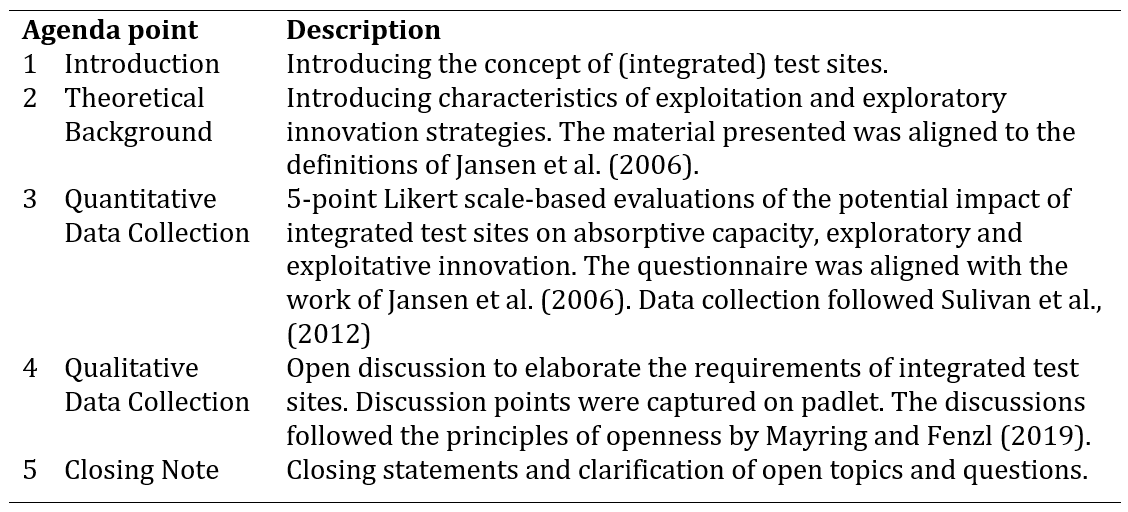
Results
The workshops were recorded and we transcribed the recordings. The criteria for achieving methodological trustworthiness that guided the research include validity, reliability, and robustness (Lincoln & Guba, 1990). We examined quantitative data using analysis of means and variances. Using content analysis, we analyzed the qualitative data. The contents were compared and carefully discussed. If necessary, synonymous statements of participants were synthesized. Lastly, the content data were juxtaposed and analyzed for balancing and reinforcing interdependencies.
Integrated Test Site Requirements
Six aspects that determine the suitability of integrated test sites emerged from the qualitative research. Namely: operations, physical environment, technical infrastructure, and legal environment, as well as organizational infrastructure and operational infrastructure. Within each aspect and requirement category, we identified subfactors. Table 3 illustrates a formulation of our critical findings.
Table 3. Integrated Test Site Requirements
In a second instance, the participants discussed how the requirements are influenced by and likewise influence the attractiveness for different interest groups. We identified three interest groups, namely, policymakers, test site users, and companies. Participants identified two levels of requirement and interest group interplay. First, the local and thus site-specific level. Second the regional level. Starting with the local level, participants indicated that policymakers could influence:
- The operational infrastructure through investment in logistics.
- The legal environment through reducing bureaucracy barriers.
- The technical infrastructure by making proprietary data available.
Adding to this, the degree to which an area meets or exceeds requirements concerning the physical environment, the operational infrastructure, the legal environment, and the technical infrastructure positively influences its suitability for cross-industrial testing. At the regional level, participants argued that social and environmental protection and maintenance are essential. The organizational infrastructure, however, was not subject to interest group alignment.
Figure 1 illustrates the identified dependencies and dynamics at integrated test sites. Within the figure, the direction of the arrow indicates the direction of the relationship. The notation used on the arrow is [relation (+); variable; object]. For example, the notation [+ Level of Fulfillment; Attractiveness] reads as follows: as the level of fulfilment of criteria x increases, the level of attractiveness of the test site increases.
Figure 1. Integrated Test Sites, Interplay and Boundary Conditions
We analyzed the impact of integrated test sites on innovation through quantitative evaluation. The participants ranked the likelihood to which integrated test sites might be beneficial, in descending order. For each category – exploratory and exploitative innovation and absorptive capacity – we designed a pre-defined set of questions. Statistical data analysis of responses to the questions included derivation of the mean (M) and standard deviation (SD).
Table 4 displays the outcome of our quantitative data analysis. During the study, participants evaluated each item (for example, interdisciplinary cooperation, new collaboration). The study framed the questions as follows: “How well do integrated test sites support [item]”.
Table 4. Factor Evaluation Metrics for Exploratory, Exploitative and Absorptive Capacity
Innovative Capacity of Integrated Test SitesOverall, the data show that integrated test sites add to the exploitative and exploratory innovation of industries and support the absorptive capacity of an industry and region.
The research juxtaposed three concepts to analyze the relationship between exploratory and exploitative innovation, and absorptive capacity. The group discussions informed the juxtaposition. The analysis merged the qualitative and quantitative data. The debate showed that a simplification of the five capacity items is possible. The participants summarized the R&D expenditures and innovation infrastructure according to “Funding Availability”.
Figure 2 shows the overall contribution of exploitative and exploratory innovation to innovation capacity. The illustrated ties indicate how participants recognize that exploitation and exploratory innovation contribute to absorptive capacity. During the discussion, we identified the moderators of exploratory and exploitative innovation. Data sharing, quality of data, and linkages are moderators for exploitative innovation. Data sharing was also recognized as an exploratory moderator. Participants recognized that lateral exchange between different parties supports innovation. Moreover, the quality of test site users strongly influences the ability to innovate through integrated test sites.
Figure 2. Expected Exploration, Exploitation, and Absorptive Capacity Potential
Next, we discussed dependencies between absorptive capacity and integrated test site requirements. In the absence of a holistic and logico-rational framework, the analysis of the interplay was fragmented. Putting exploratory, exploitative innovation, moderators, and requirement fulfilment into perspective helped to analyze the interplay. Figure 3 illustrates the operating direction of each factor regarding their interplay (direct >> or reverse).
Figure 3. The three-axes of innovation capacity at test sites: Y (exploitation), X (Requirement Fulfilment Axis), and Z (exploration)
The type and dimensions of innovation were understood and appraised at the macro level in three categories (axes). These axes determine, compare, and evaluate microlevel activities and areas with potential benefit. The Y-axis represents the exploitation of existing resources (including available data) and cooperation. The Z-axis is the exploratory axis. Exploratory activities relate to the exploration of novel sources of information. As shown in Figure 3, this axis illustrates the degree of openness. Openness was identified as a precondition for exploratory exchange.
The X-axis is the degree of requirement (Figure 1). The higher the requirement fulfilment, the higher the diversity of technical backgrounds and industries at a site. The more significant the amount of test site users, the higher the availability of resources (like data). Summing it up, the X-axis sets the degree of openness upon which the Z-axis builds and dictates the amount of available data, as well as the quality of linkages through its particular function.
The interdependencies indicate that overemphasizing either exploitation or exploratory innovation strategies may lead to shortages and unsatisfactory payback of test site operations.
Discussion
This study examined the relationship between integrated technology test sites and their innovation potential. Technical, environmental, organizational, and operational characteristics and industry conditions dictate the general feasibility of integrated test sites. The findings help to prioritize areas and evaluate different integration scenarios.
According to the results, fixed and variable conditions exist. Fixed conditions relate to natural conditions, such as geology and topography. Variable conditions include the infrastructure at and around the test site. The study showed that integrated test sites support the exploitation and exploration of innovation sources depending on the requirement fulfilment. The study found that heightened access or visibility of innovation sources increases the absorptive capacity of a test site region.
Absorptive capacity has a higher positive relationship with exploratory innovation than exploitative innovation (see Figure 2). The approach’s novelty and expected benefits from interdisciplinary exchange account for the unbalanced recognition.
The fulfilment of fixed and variable requirements shapes capacity-related outputs. The results indicate a co-dependence between the realisation of integration requirements and the degree of absorptive capacity. According to the results, absorptive capacity results from exploitative and exploratory innovation aspects, which mediate the degree of integrated requirement fulfilment. Unsurprisingly, the degree of requirement fulfilment heightens the number of potential customers and, therefore, the overall chances of realising exploitation and exploration of innovation sources.
Together the findings support the conceptual premise that integrated test sites add value beyond a single industry. Previous authors such as Audretsch and Feldman (2004), analyzed geographic requirements together with technological proximity, while Yang and Steensma (2014), as well as Davies et al. (2020), added the perspective of innovation ecosystem analysis. This paper adds to these studies a novel approach by introducing “moderators” for early-stage technology development in ecosystems. The study expands thereby the literature by identifying that for technology development-centred ecosystems, moderating factors for cross-lateral exchange include interdisciplinary cooperation and mutual openness on data-related and technology-related topics. The research insights imply that multi-criteria requirement design can enhance an ecosystem's turnover.
Conclusion
The findings of this study show that expanding technological initiatives across industries enables the exploration and exploitation of technical knowledge. Both exploitative innovation and exploratory innovation strategies may result in increasing the absorptive capacity of regions and companies. Multidisciplinary networking enhances exploratory innovation potential. Exploiting performance improvements and data-driven learning enables companies to optimize their technologies alongside existing innovation trajectories. Participating in exchange-driven ecosystems can lower innovation barriers with a resulting increase in absorptive capacity.
Being limited to focus-groups, the study lacks an in-depth understanding of the motives behind the requirements and scoring. The heterogeneous sample allowed us to reflect the multidimensional issue of integrated test sites. However, the sample did not include social sciences. Not considering the knowledge of social scientists, the results have limited generalizability involving governance and legal conditions. The study was limited to Spanish and German experts, which raises the possibility of regional and cultural biases.
The idea for integrated test sites originated from an EU-funded project, initially designed only for trialing mineral exploration technologies. The research on ERS’ integrated test sites showcases how the integration of different disciplines can increase innovation outputs of grants. The research suggests that current funds do not fully exploit the innovation potential of integrated test sites. Cooperation between other technology developers and industries can also increase the innovative potential of projects.
The study shows that both individual companies and regional governments can benefit from interdisciplinary collaboration involving test sites. To increase the absorptive capacity of test sites, policymakers can provide both logistical and legal support. Policy support is especially relevant, where inefficient bureaucracy increases the time to bring initiatives into operation. We found that sharing and exchanging knowledge supports the quality of linkages, cooperation, research institutions, and universities. Hence, integrated test sites can be transformed into innovation ecosystems.
Future research could add value by analyzing the numerical relationship between exploratory innovation, exploitative innovation, and absorptive capacity in more depth. For more informed site selection, studies following this one could assign weights to the identified requirements. Randomized trials under controlled conditions could provide results with more definitive evidence about the moderating roles of requirements and innovative strategies in developing integrated test sites.
The information from the study can be used [please add: by whom?] to develop targeted strategies for expanding current test sites. We believe it should be a priority for future projects to ensure the consideration of innovation strategies, and inclusive requirement mapping for test sites.
Acknowledgments
The authors gratefully acknowledge the contribution of Leila Ajjabou, the coordinator of the INFACT project, and the contributing experts.
Funding
This research received funding from the European Union’s Horizon 2020 research and innovation program under grant agreement No. 776487.
References
Apfelbeck, M., Kuß, S., Wedler, A., Gibbesch, A., Rebele, B., & Schäfer, B. 2009. A Novel Terramechanics Testbed Setup for Planetary Rover Wheel-Soil Interaction. In Proceedings Proceedings. ISTVS, 11th European Regional Conference of the International Society for Terrain-Vehicle Systems. Bremen, Germany.
Audretsch, D.B., & Feldman, M.P. 2004. Chapter 61 Knowledge Spillovers and the Geography of Innovation. In Handbook of Regional and Urban Economics: 2713-2739.
Ballon, P., Pierson, J., & Delaere, S. 2005. Test and Experimentation Platforms for Broadband Innovation: Examining European Practice. SSRN Electronic Journal. DOI: https://doi.org/10.2139/ssrn.1331557
Benner, M.J., & Tushman, M.L. 2003. Exploitation, Exploration, and Process Management: The Productivity Dilemma Revisited. Academy of Management Review, 28(2): 238-256. DOI: https://doi.org/10.2307/30040711
Borg, E., & Fichtelmann, B. 2014. DEMMIN - Test Site for Remote Sensing in Agricultural Application. SMOS Quality Working Group. Frascati, Italy.
Charlton, C., & Ternan, L. 2002. Guest editors' foreword: land degradation and environmental management in Iberia. Land Degradation & Development, 13(2): 85-87. DOI: https://doi.org/10.1002/ldr.483
Choy, L.T. 2014. The Strengths and Weaknesses of Research Methodology: The Strengths and Weaknesses of Research Methodology: Comparison and Complimentary between Qualitative and Quantitative Approaches. IOSR Journal Of Humanities And Social Science (IOSR-JHSS), 19(4): 99-104. DOI: https://doi.org/10.9790/0837-194399104
Christiansen, A.V., Auken, E., & Viezzoli, A. 2011. Quantification of Modeling Errors in Airborne TEM Caused by Inaccurate System Description. GEOPHYSICS, 76(1): F43-F52. DOI: https://doi.org/10.1190/1.3511354
Cortinovis, N., & van Oort, F.G. 2017. Between Spilling Over and Boiling Down: Network-Mediated Spillovers, Absorptive Capacity and Productivity in European Regions. SSRN Electronic Journal, forthcoming. DOI: https://doi.org/10.2139/ssrn.3088732
Cunningham, D., Grebby, S., Tansey, K., Gosar, A., & Kastelic, V. 2006. Application of Airborne Lidar to Mapping Seismogenic Faults in Forested Mountainous Terrain, Southeastern Alps, Slovenia. Geophysical Research Letters, 33(20). DOI: https://doi.org/10.1029/2006gl027014
Danneels, E. 2002. The Dynamics of Product Innovation and Firm Competences. Strategic Management Journal, 23(12): 1095-1121. DOI: https://doi.org/10.1002/smj.275
Davies, G.H., Flanagan, J., Bolton, D., Roderick, S., & Joyce, N. 2020. University knowledge spillover from an open innovation technology transfer context. Knowledge Management Research & Practice: 1-10. DOI: https://doi.org/10.1080/14778238.2020.1746204
Diamantopoulos, A., & Winklhofer, H.M. 2001. Index Construction with Formative Indicators: An Alternative to Scale Development. Journal of Marketing Research, 38(2): 269-277. DOI: https://doi.org/10.1509/jmkr.38.2.269.18845
Fernhaber, S.A., & Patel, P.C. 2012. How do Young Firms Manage Product Portfolio Complexity? The role of absorptive capacity and ambidexterity. Strategic Management Journal, 33(13): 1516-1539. DOI: https://doi.org/10.1002/smj.1994
Freeman, T. 2006. 'Best Practice' in Focus Group Research: making sense of different views. Journal of advanced nursing, 56(5): 491-497. DOI: https://doi.org/10.1111/j.1365-2648.2006.04043.x
Geiger, S.W., & Makri, M. 2006. Exploration and Exploitation Innovation Processes: The role of organizational slack in R & D intensive firms. The Journal of High Technology Management Research, 17(1): 97-108. DOI: https://doi.org/10.1016/j.hitech.2006.05.007
Grimpe, C., Sofka, W., Bhargava, M., & Chatterjee, R. 2017. R&D, Marketing Innovation, and New Product Performance: A Mixed Methods Study. Journal of Product Innovation Management, 34(3): 360-383. DOI: https://doi.org/10.1111/jpim.12366
Guerin, T.F. 2000. Overcoming the Constraints to the Adoption of Sustainable Land Management Practices in Australia. Technological Forecasting and Social Change, 65(2): 205-237. DOI: https://doi.org/10.1016/s0040-1625(99)00090-6
Hennink, M.M., Kaiser, B.N., & Weber, M.B. 2019. What Influences Saturation? Estimating Sample Sizes in Focus Group Research. Qualitative health research, 29(10): 1483-1496. DOI: https://doi.org/10.1177/1049732318821692
Inomata, T., Pinzón, F., Ranchos, J.L., Haraguchi, T., Nasu, H., Fernandez-Diaz, J.C., Aoyama, K., & Yonenobu, H. 2017. Archaeological Application of Airborne LiDAR with Object-Based Vegetation Classification and Visualization Techniques at the Lowland Maya Site of Ceibal, Guatemala. Remote Sensing, 9(6): 563. DOI: https://doi.org/10.3390/rs9060563
Jansen, J.J.P., van den Bosch, F.A.J., & Volberda, H.W. 2006. Exploratory Innovation, Exploitative Innovation, and Performance: Effects of Organizational Antecedents and Environmental Moderators. Management Science, 52(11): 1661-1674. DOI: https://doi.org/10.1287/mnsc.1060.0576
Ji, J. 2019. How Can Exploratory and Exploitative Innovation Affect NPD Speed and NPD Quality? Academy of Management Proceedings, 2019(1): 13055. DOI: https://doi.org/10.5465/ambpp.2019.13055abstract
Jong, J.P. de, & Freel, M. 2010. Absorptive Capacity and the Reach of Collaboration in High Technology Small Firms. Research Policy, 39(1): 47-54. DOI: https://doi.org/10.1016/j.respol.2009.10.003
Kesselring, M., Wagner, F., Kirsch, M., Ajjabou, L., & Gloaguen, R. 2020. Development of Sustainable Test Sites for Mineral Exploration and Knowledge Spillover for Industry. Sustainability, 12(5): 2016. DOI: https://doi.org/10.3390/su12052016
Kreijns, M., Gerardts, R., & Rutten, M. 2018. Demonstration Sites to Speed Up Innovations in Delta Technology. Journal of Cleaner Production, 171: S144-S146. DOI: https://doi.org/10.1016/j.jclepro.2016.02.017
Kuusk, A., Lang, M., & Nilson, T. 2005. Forest Test Site at Järvselja, Estonia. In Proceedings of the 3rd ESA CHRIS/Proba Workshop. Frascati, Italy. DOI: https://doi.org/10.1016/j.rse.2007.12.005
Lane, R.J., Grujic, M., Aravanis, T., Tracey, R., Dransfield, M., Howard, D., & Smith, B. 2009. The Kauring Airborne Gravity Test Site, Western Australia. AGU Fall Meeting Abstracts, 2009: G51A-0656. DOI: https://doi.org/10.1071/aseg2015ab271
Leech, N.L., Dellinger, A.B., Brannagan, K.B., & Tanaka, H. 2010. Evaluating Mixed Research Studies: A Mixed Methods Approach. Journal of Mixed Methods Research, 4(1): 17-31. DOI: https://doi.org/10.1177/1558689809345262
Li, X., Ouelhadj, D., Song, X., Jones, D., Wall, G., Howell, K.E., Igwe, P., Martin, S., Song, D., & Pertin, E. 2016. A Decision Support System for Strategic Maintenance Planning in Offshore Wind Farms. Renewable Energy, 99: 784-799. DOI: https://doi.org/10.1016/j.renene.2016.07.037
Lincoln, Y.S., & Guba, E.G. 1990. Judging the Quality of Case Study Reports. International Journal of Qualitative Studies in Education, 3(1): 53-59. DOI: https://doi.org/10.1080/0951839900030105
Mayring, P., & Fenzl, T. 2019. Qualitative Inhaltsanalyse. In N. Baur & J. Blasius (Eds.), Handbuch Methoden der empirischen Sozialforschung (2. Aufl. 2019): 633-648. Wiesbaden: Springer Fachmedien Wiesbaden. DOI: https://doi.org/10.1007/978-3-658-21308-4_42
McCoy, M.D., Asner, G.P., & Graves, M.W. 2011. Airborne Lidar Survey of Irrigated Agricultural Landscapes: an application of the slope contrast method. Journal of Archaeological Science, 38(9): 2141-2154. DOI: https://doi.org/10.1016/j.jas.2011.02.033
McGrath, J.E., & Kravitz, D.A. 1982. Group Research. Annual Review of Psychology, 33(1): 195-230. DOI: https://doi.org/10.1146/annurev.ps.33.020182.001211
Papalambrou, A., & Doulos, L.T. 2019. Identifying, Examining, and Planning Areas Protected from Light Pollution. The Case Study of Planning the First National Dark Sky Park in Greece. Sustainability, 11(21): 5963. DOI: https://doi.org/10.3390/su11215963
Raval, S. 2018. Smart Sensing for Mineral Exploration through to Mine Closure. International Journal of Georesources and Environment, 4(3). DOI: https://doi.org/10.15273/ijge.2018.03.019
Spyridonidou, S., Vagiona, D.G., & Loukogeorgaki, E. 2020. Strategic Planning of Offshore Wind Farms in Greece. Sustainability, 12(3): 905. DOI: https://doi.org/10.3390/su12030905
Vagiona, D., & Kamilakis, M. 2018. Sustainable Site Selection for Offshore Wind Farms in the South Aegean—Greece. Sustainability, 10(3): 749. DOI: https://doi.org/10.3390/su10030749
Watson, R. 2015. Quantitative research. Nursing standard (Royal College of Nursing (Great Britain) 1987, 29(31): 44-48. DOI: https://doi.org/10.7748/ns.29.31.44.e8681
Wipulanusat, W., Panuwatwanich, K., Stewart, R.A., & Sunkpho, J. 2020. Applying Mixed Methods Sequential Explanatory Design to Innovation Management. In 10th international conference on engineering, project, and: 485-495. [Place of publication not identified]: SPRINGER Verlag, SINGAPOR. DOI: https://doi.org/10.1007/978-981-15-1910-9_40
Yang, H., & Steensma, H.K. 2014. When do Firms Rely on their Knowledge Spillover Recipients for Guidance in Exploring Unfamiliar Knowledge? Research Policy, 43(9): 1496-1507. DOI: https://doi.org/10.1016/j.respol.2014.04.016
Zhao, Z., Zhe, L., Zhang, X., Zan, X., Yao, X., Wang, S., Ye, S., Li, S., & Zhu, D. 2018. Spatial Layout of Multi-Environment Test Sites: A Case Study of Maize in Jilin Province. Sustainability, 10(5): 1424.
Keywords: absorptive capacity, Demonstration, Exploitative Innovation, Exploratory Innovation, Mineral Exploration, Proof-of-Concept, Test Sites

